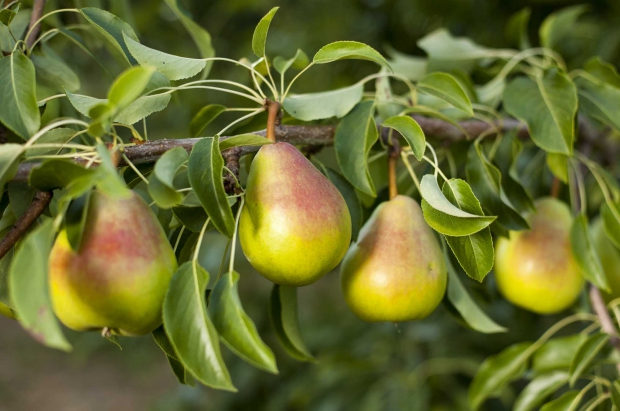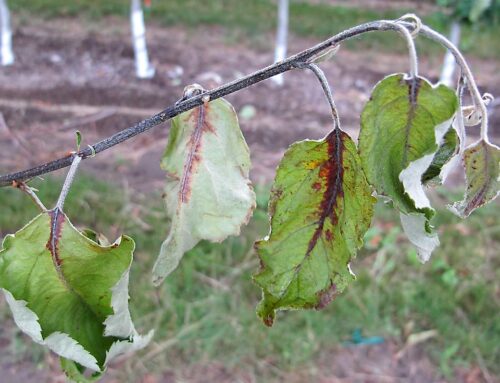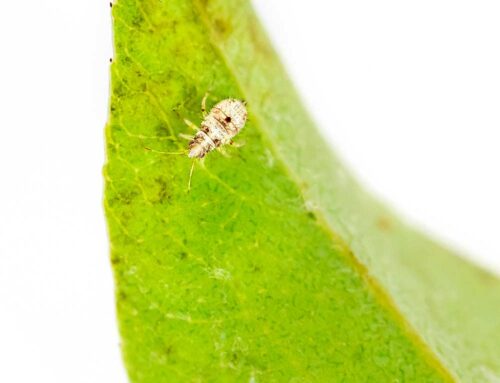
Gem pears at the Oregon State University Mid-Columbia Agricultural Research and Extension Center in Hood River Oregon in 2013. (TJ Mullinax/Good Fruit Grower)
Gordy Sato, pear grower at Parkdale, Oregon, will plant 500 trees of the new variety Gem next spring. He believes that new varieties will pique consumers’ interest and encourage them to eat more than three pounds of pears per year, which is the national average.
Gem is a fireblight-resistant pear developed at the U.S. Department of Agriculture’s breeding program in West Virginia. It’s a medium-size pear with a light green skin that turns a blushed yellow when ripe. It matures about a week after Bartlett but can be harvested over an extended period.
One of the selling points is that it can be eaten crisp, off the tree, without ripening or conditioning.
“I think new varieties will be really important,” Sato said, noting that the current low rate of pear consumption means there’s plenty of room for growth. “I think the future for pears is still totally unlimited because of how much the consumers are eating now.”
Sato is a member of Diamond Fruit Growers, Hood River, a 90-member cooperative, which is encouraging its growers to plant the pear. It does not have an exclusive license. Anyone can plant Gem, but trees are still in limited supply.
“It appears to be an exciting variety for us,” said David Garcia, president of Diamond Fruit. “It has more flavor coming off the tree, and it doesn’t need to be ripened at the same level as the green d’Anjou or other winter pears have to be. There’s a little crunch to it. Consumers can have that out-of-the-store experience like they do with an apple.”
Another selling point is that the flesh doesn’t immediately turn brown when the pear is cut, but stays an attractive color.
Growers in the Hood River area, which has a wetter climate than Washington’s pear-growing areas, are also interested in the fact that it’s russet resistant and hope that they’ll be able to produce Gem pears with a clean finish, Garcia said.
“We’ve seen what new varieties have done for apples, and it’s been a long time since pears have had new varieties that offer anything different—and this one does,” he added. “We’re excited about trying new varieties. We think the timing is right for pears to get into new varieties.” •






Leave A Comment